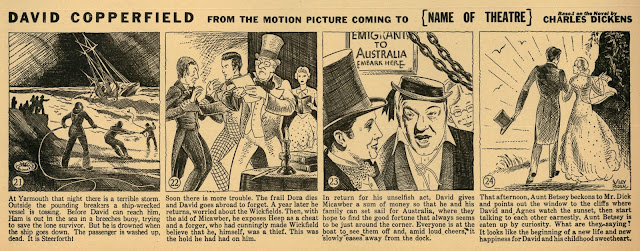Claudette Juggles Husbands Again
When Wars Collide: Tomorrow Is Forever (1946)
Sometimes in youth I could at least emulate a grown-up by selecting other than monsters and spacemen for a late show. Tomorrow Is Forever had a premise that really intrigued me, a man apparently lost in the war whose wife remarries and lives content until damaged husband #1 returns twenty years later, his identity concealed to her and everyone. Principals are Claudette Colbert, Orson Welles, and George Brent (whom she weds after apparent war loss of Welles). Colbert had been eased into mother parts with Since You Went Away, was now a well-preserved forty-three. She was up on Orson by twelve years, but he could disguise like something out of a mummy case if need be, and bridge age gulf nimbly. Welles was wanted as an actor more than director, maybe even a romantic lead provided he could push far enough back from dining tables. Who'd argue love skills with a man married to Rita Hayworth? Tomorrow Is Forever has a flashback with all-American Orson kitted in uniform to surprise Colbert with news of WWI enlistment. He looms over her, is photographed from slightly below for the clinch, then gives us his back when they kiss, sort of a Laird Cregar had weight loss transitioned him to smooch parts. "I was deeply ashamed but in need of money," was Welles' later explanation (to Peter Bogdanovich) for doing Tomorrow Is Forever. He doesn't look/act to be slumming any more than he often would for radio or something like Follow The Boys. The war had froze individual statements in any case, necessity being to pull together and get a harsh job done. Tomorrow Is Forever let Welles play out tragic consequence of war's cruelty, and thick-applied make-up or no (Blu-Ray lets us see age lines drawn across his forehead like road directions), he is fine in what was no easy part. I'm challenged, frankly, to think of anyone else, let alone Welles' age, who could have brought it off.
"John Andrew MacDonald" as played by Welles becomes "Dr. Erik Kessler," an Austrian refugee employed unknowingly by subsequent husband George Brent. MacDonald had no accent, but Kessler decidedly does. Latter also barely gets around on a cane and has a heavy beard, but still a face just like Orson Welles. We have to get over Colbert not recognizing him, even as common sense suggests anyone would. Kessler is sort of front man for a lot of former enemies let into the
Direction was by the always-interesting Irving Pichel, and Max Steiner does a score that I'd credit at least fifty percent of Tomorrow's voltage to (no slight on the movie, but again a boost to Steiner as baton behind much of joy and tears during the Classic Era). Tomorrow Is Forever was made by "International Pictures," a set-up formed by William Goetz after he tried to snake Zanuck's job at 20th and failed. Goetz was a son-in-law to Louis Mayer, so had establishment strength behind him, but some thought him unfit for creative duty. Has anyone made a list of film producers who should have pursued other lines of work? I bet it would run long. Fullest background on Tomorrow's production can be had by listening to Ray Faiola's audio commentary on the Blu-Ray. Tomorrow Is Forever has wandered between the winds of distribution for years, not being part of larger packages and tending to vanish except from fans most diligent. Its recent release from ClassicFlix settles all that and is a best I've ever seen the picture look.



















































